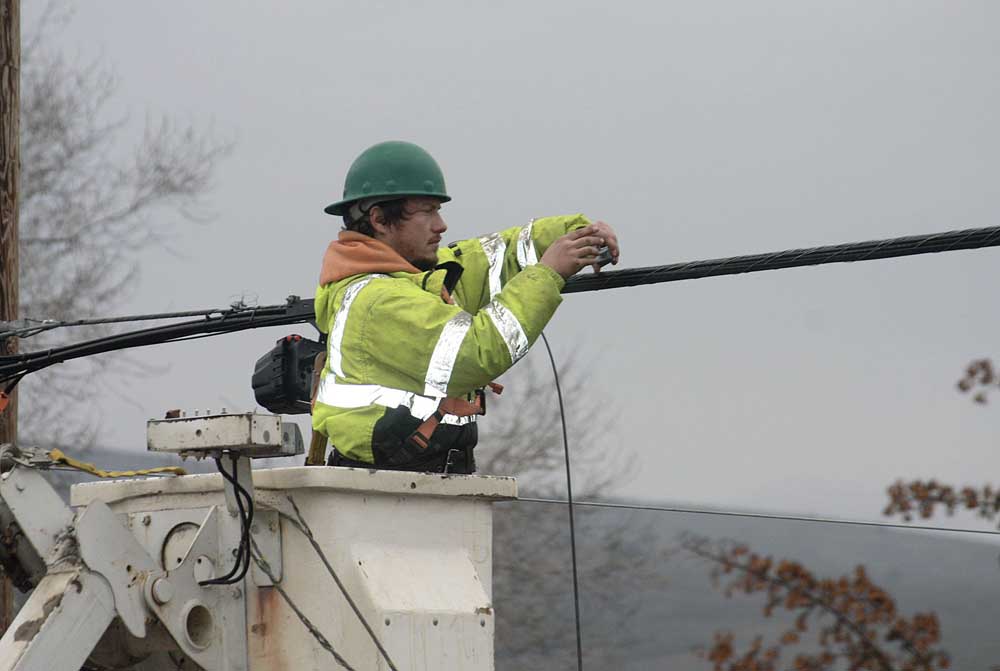Oregon moves closer to $700 million for rural broadband
Published 9:00 am Saturday, June 29, 2024

- Workers install high-speed internet in Maupin.
Oregon moved closer to nearly $700 million in federal funding after a plan for high-speed internet throughout the state was approved by the National Telecommunications and Information Administration.
The Broadband Equity, Access and Deployment Program funding enables access to precision agriculture, which can increase yields for farmers, said Margi Hoffman, USDA Rural Development state director for Oregon.
Tools such as real-time soil moisture monitors and remote controlled irrigation systems, also help to conserve water amid drought and save producers money on electricity bills.
“It’s a way for farmers all over the country to use less to grow more. … It seems to be the future of agriculture in this country,” said Nick Batz, director of the Oregon Broadband Office.
Jim Cupples, director of field operations for the nonprofit Precision Ag Connectivity and Accuracy Stakeholder Alliance, said there’s an environmental aspect to precision agriculture, but the bigger impact is to the farmer’s wallet.
“Whether it’s water or inputs, fertilizer, whatever it is, when you’re using less of it and optimizing, you’re saving money,” added Cupples, a fellow with the Economic Recovery Corps focused on broadband access.
“Everything is spiraling upwards as far as the costs for the farmer,” Cupples said.
Growers need high-level broadband because of the massive data maps programs use.
The funding will enable farmers to expand economic opportunities and tap into markets beyond their region, experts said.
Other benefits for rural areas
Broadband also could have other beneficial ripples in rural areas, including better emergency response and economic development through a remote workforce and other factors.
Small towns with stagnant or declining populations could get a boost with a bigger customer base or labor pool.
Batz called the internet almost a necessity when buying a house, much like electricity.
“It’s a way to allow those kids who grew up in rural communities to go back to those rural communities and not have to go to an urban core to get a job,” Batz said.
Program background
The National Telecommunications and Information Administration announced June 13 it had approved Oregon’s initial proposal for $689 million in Broadband Equity, Access and Deployment funding.
Washington’s initial proposal to receive $1.22 billion was approved May 24.
California, allocated $1.86 billion, and Idaho, set to receive $583 million, aren’t as far along in the process.
The program overall has $42.45 billion.
“This really is a historic investment by the federal government,” Batz said.
Oregon had already received $5 million for planning and will receive $13.7 million to administer the program, Batz said.
Within a year, Oregon must have its final proposal approved by the National Telecommunications and Information Administration to receive the bulk of its award.
Approved subgrantees, such as local governments, tribes and internet service providers, will build the infrastructure to provide broadband access.
Batz said that will likely be done through a mix of fiber, fixed wireless and low orbit satellites. He added that the program doesn’t include funding for maintenance or upgrades.
Cupples said farmers will need to advocate and “make noise” to ensure their acreage is covered by participating in county broadband action teams.
“It’s a fixed pot of money and it’s not endless,” he cautioned.
More rural broadband coverage
Commentary: How you can help expand high-speed internet in rural areas
Western Innovator: Entrepreneur finds niche in ag technology
Rural broadband push continues, but challenges remain
Oregon county, nonprofit testing rural broadband
Broadband is coming to rural communities. Will farmers be left behind?






